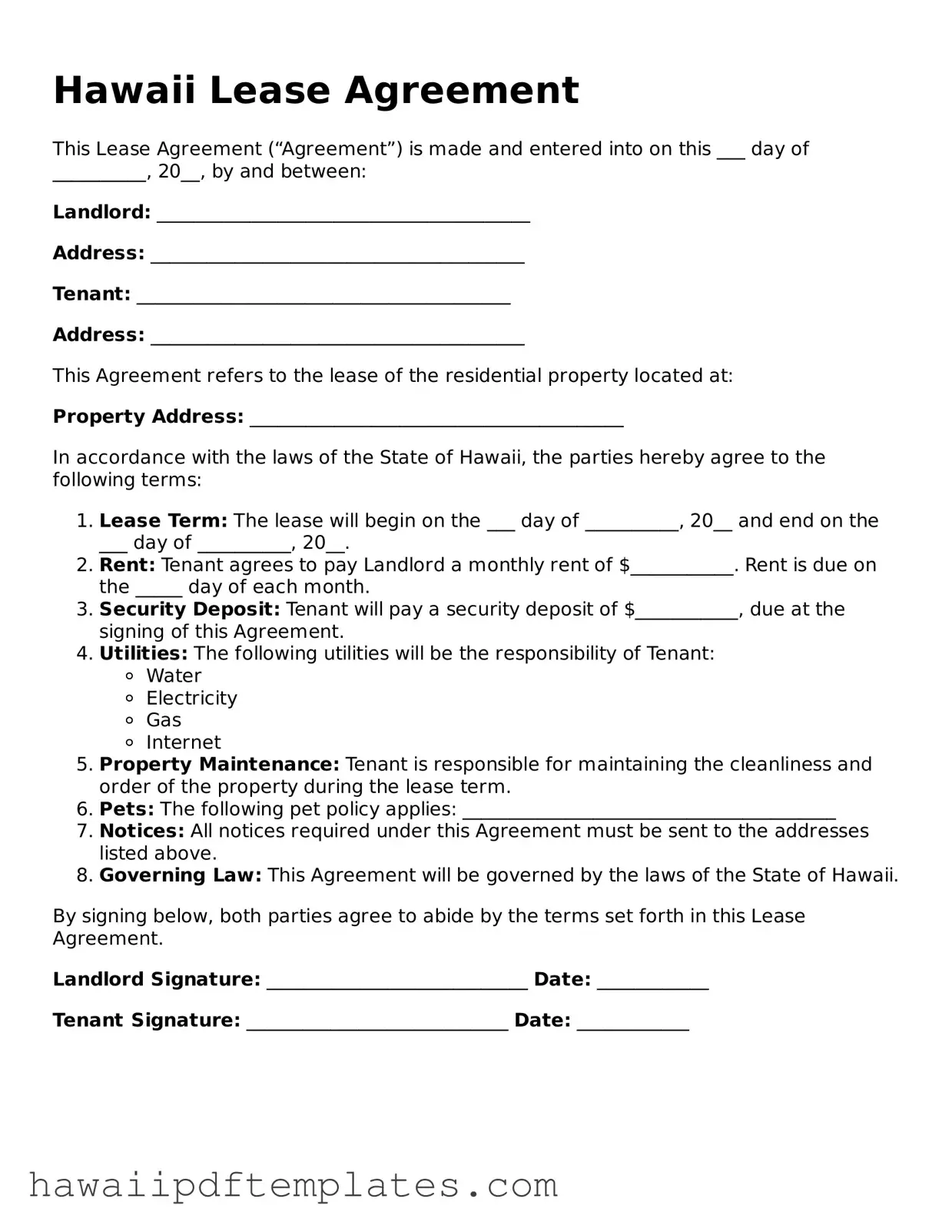Free Lease Agreement Document for Hawaii State
The Hawaii Lease Agreement form is a legal document that outlines the terms and conditions between a landlord and a tenant for renting property in Hawaii. This agreement protects the rights of both parties and ensures a clear understanding of their responsibilities. To get started, fill out the form by clicking the button below.
Customize Form Online
